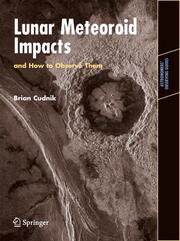Detailansicht
Lunar Meteoroid Impacts and How to Observe Them
Astronomers' Observing Guides
ISBN/EAN: 9781441903235
Umbreit-Nr.: 1920836
Sprache:
Englisch
Umfang: xvi, 240 S., 152 s/w Illustr., 240 p. 152 illus.
Format in cm:
Einband:
kartoniertes Buch
Erschienen am 04.12.2009
Auflage: 1/2010
€ 40,65
(inklusive MwSt.)
Nachfragen
